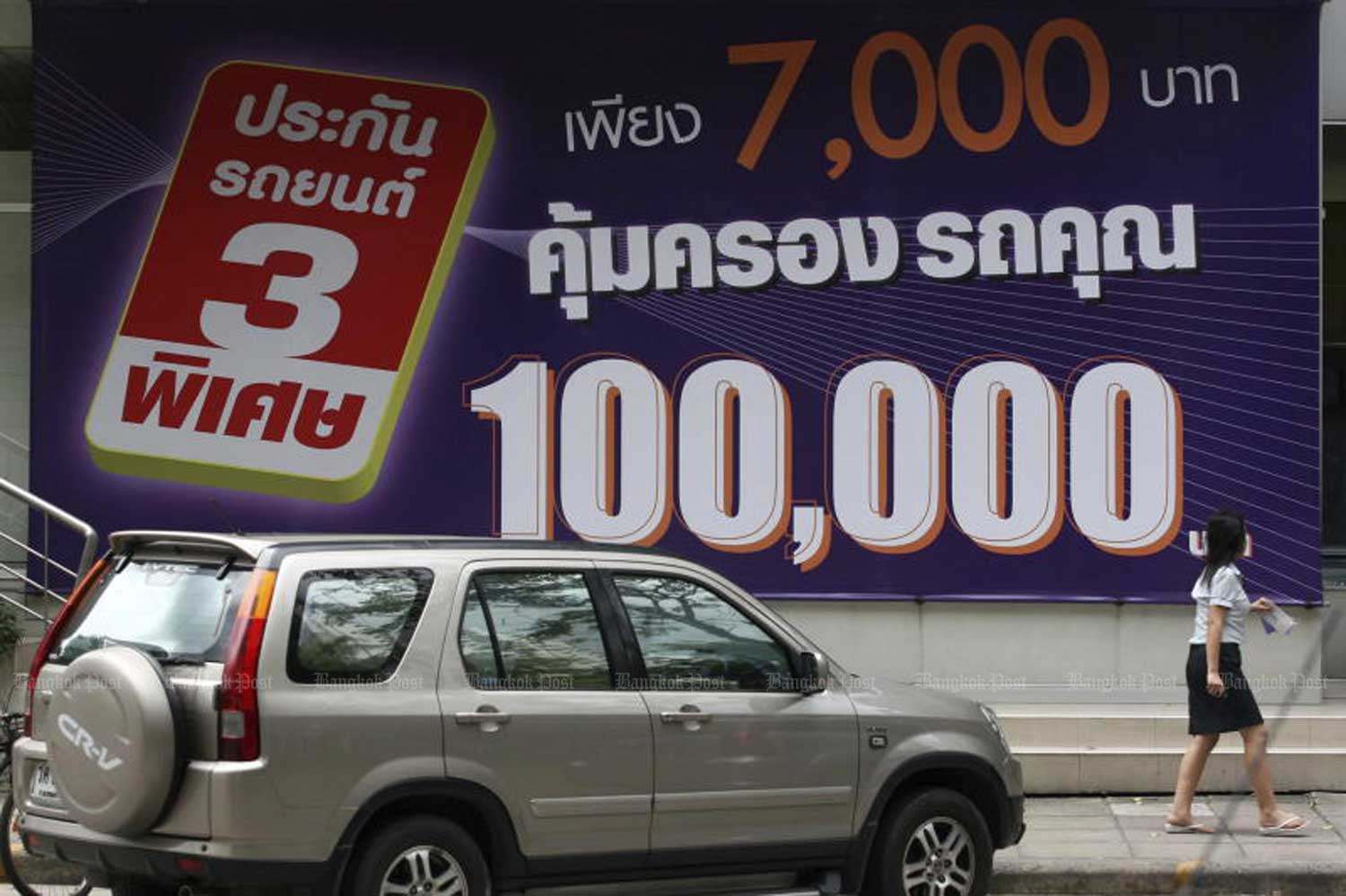
The insurance regulator is being urged to reconsider the ceiling on brokerage commission fees for motor insurance in order to accommodate existing market conditions, as the motor insurance segment has posted losses for three straight years.
Kheedhej Anansiriprapha, executive director of the Thai General Insurance Association (TGIA), said the net loss ratio for motor insurance has seen considerable increases in recent years -- to 66% for the voluntary base and 60.9% for the compulsory base in 2018, up from 62.8% and 41.2% respectively in 2016.
The result is that for every 100 baht of motor insurance premiums a company receives, 66 baht is paid for claims expenses, Mr Kheedhej said.
When the commission fee is included, motor insurance businesses reported net losses for the three years of 2016-18.
The insurance regulator has set the ceiling at 18%, while the ceiling for operating expenses is generally capped at 15% for brokerage commission fees for motor insurance.
"In practice, few businesses are following this ceiling because they want to grow revenue, but they sacrifice the bottom line [net profit]," Mr Kheedhej said.
In Malaysia, the commission fee for motor insurance is 12-15%, he said. Customer screening is more thorough and agents with few insurance claims receive higher commission rates.
"The claims rate in Thailand has increased by around 20-30% since the regulator enforced claims during repair periods," Mr Kheedhej said.
Insurance companies should not compete on prices and commission fees, he said, as this will worsen the loss ratio.
According to information gathered by the TGIA in 2018, the combined net loss ratio of 46 non-life insurance companies stood at 99.5%.
The combined net loss ratio in the motor insurance business stood at 106.7% for these 36 companies, while the ratio for non-motor business, such as fire, marine and miscellaneous insurance, was 81.5%.
Large and mid-sized firms operating in non-life insurance businesses are adjusting for the motor insurance business by cutting commission fees and screening customers, Mr Kheedhej said.
Small firms, registering annual revenue of less than 1 billion baht, are still struggling with the loss ratio, which is higher than the industry average, he said.